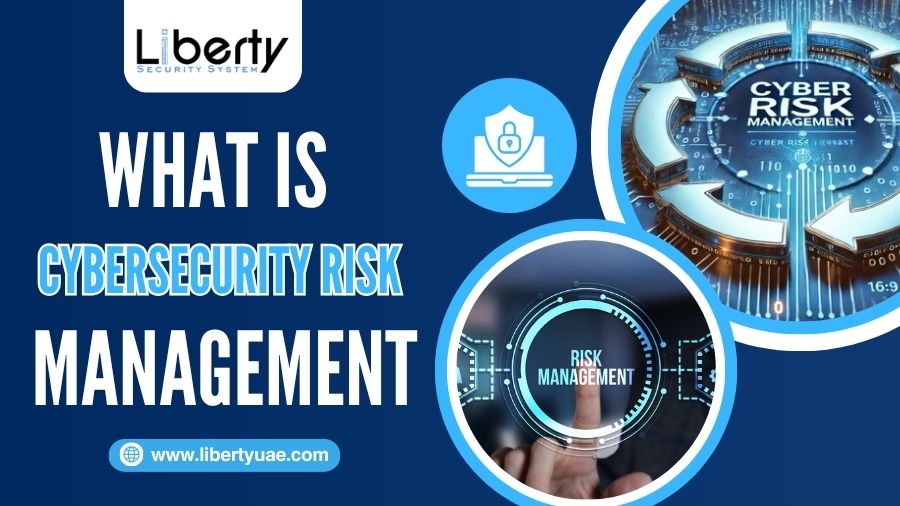Cybersecurity risk management is the procedure of recognizing a company’s digital assets, examining current protection standards, and executing solutions to either continue what works or to reduce protection risks that may pose dangers to a business. This kind of constant vulnerability assessment management is vital as the company and the outsider threat landscape grow.
Vulnerability management is a constant part of all business functions. New exploits are found, followed by patches released to solve them. New, possibly vulnerable gadgets that enhance the attack surface are often added to the network. This is particularly true with the remarkable growth of Internet of Things gadgets and sensors that are being established in a number of physical locations.
Table of Contents
Cybersecurity Risk Management Process
Cyberattacks aren’t random. If you understand where to examine, there are frequently clear indications of a planned attack against a company. Telltale signs comprise mentions of the company on the dark web, the registration of spoofed domain names for phishing attacks, and the sale of secret data, like user account logins. These previous warning indications can be surfaced more effectively through established threat modeling, which assists companies in anticipating likely attack vectors and focuses on their protection methods accordingly.
After completing a one-time cybersecurity maturity assessment, many organizations do not continue their vulnerability management program, despite the available signals. Security posture frequently stagnates while threats continue to change in the absence of constant visibility and remediation.
Strategy for Cybersecurity Risk Management
A cybersecurity risk management strategy executes four quadrants that provide broad and constant Digital Risk Protection. DRP outlets utilize several reconnaissance methods to locate, track, and research dangers in real time.
Utilizing both indicators of compromise and signs of attacks intelligence, a DRP solution can research dangers and warn of attacks.
Let’s discuss the four quadrants –
Step 1 – Identify and Analyze the Risk
The objective of this fundamental phase of cybersecurity risk management is to identify specific potential problems. Finding your assets—anything valuable that requires protection, like client credit card numbers, proprietary business plans, physical servers, or even the knowledge of your most important personnel—is the first step in the process.
Finding the Threats—agents with the potential to cause harm—is the next step in the detective process after assets are identified. These risks can be internal (human error), external (hackers and computer viruses, or malware), or even environmental (natural disasters).
Step 2 – Evaluate the Risk
It uses the extensive risk list to decide how best to use scarce resources, which is a critical business decision. Setting priorities is essential because it is impossible to completely eliminate every risk. Major hacks that might steal all client financial information and shut down core functions for weeks (Risk B, Very High Impact) are far more urgent than a minor virus that might only slow down one employee’s computer (Risk A, Low Impact).
In order to provide the highest possible return on the security investment, this evaluation process makes sure that resources—including time, money, and personnel—are allocated prudently to safeguarding against the most important, high-impact events first.
Step 3 – Treat the Risk
This stage involves selecting specific tactics to address the risks that have been prioritized. There are four primary methods. The first is to completely avoid the risk, which entails ceasing the risk-causing activity, like deciding not to store private client information. The most popular approach is to mitigate the risk by putting security controls in place to lessen its impact or likelihood; this can be done by patching out-of-date systems, installing strong antivirus software, and educating employees about phishing attempts.
The third choice is to transfer the Risk, which entails assigning the financial load to a third party. This is frequently accomplished by acquiring a Cyber Insurance policy that pays for incident recovery expenses. Finally, a company may decide to accept the Risk, which entails merely having a plan in place to handle the infrequent, minor incident when it happens, for little risks where the price of prevention overshadows the possible damage.
Step 4 – Monitor and Review
Recognizes that cybersecurity risk management is a continuous cycle rather than a one-time project. Every day, the digital landscape shifts as new threats appear and the company itself changes (new technology, new employees, etc.). To make sure that current security tools, such as firewalls, are operating efficiently, this calls for ongoing testing.
To verify that no previously “Low Risk” item has been elevated to “High Risk” as a result of environmental changes or new threat intelligence, regular review sessions are crucial. The organization as a whole is kept resilient over time by this constant adaptation, which guarantees that the security posture stays strong against the newest threats and technologies.
Major Benefits of Cybersecurity Risk Management
Executing cybersecurity risk management makes sure cybersecurity isn’t relegated to an afterthought in the regular functions of a company. Having a cybersecurity risk management method in place also makes sure that processes and guidelines are followed at set intervals, and the protection is kept updated.
Cybersecurity risk management delivers constant supervision, identification, and mitigation of the following dangers –
- Phishing Detection
- VIP and Executive Protection
- Brand Protection
- Fraud Protection
- Sensitive Data Leakage Monitoring
- Dark Web Activity
- Automated Threat Mitigation
- Leaked Credentials Monitoring
- Malicious Mobile App Identification
- Supply Chain Attacks
Why is Cybersecurity Risk Management Important?
Cybersecurity risk management is crucial because it assists a company in assessing its existing cybersecurity risk profile. With this knowledgeable decision, the protection company will move ahead to decrease the level of danger and address exposures.
Another reason cybersecurity risk management is also crucial is that it fosters situational awareness within a security organization. Analysts simply do not know what they do not know. The capacity to consider all available information, identify what is significant, and take appropriate action is known as awareness.
Knowing the risks that are present in your company and those that could develop in the future is crucial.
Three different levels can be used to evaluate awareness –
1. Situational Awareness – A company comprehends the critical – people, information, and procedure – and functional components for implementing data security methods.
2. Situational Ignorance – Companies assume everything is OK without thinking about the effect of individuals, data, and procedures. They may be executing protection controls and awareness training, but there is no simple procedure or method that aligns with danger reduction and mitigation. In this case, budgets continue to creep ever upward.
3. Situational Arrogance – Despite being regularly breached and compromised, organizations continue to spend large sums of money. In actuality, they might consider people, data, and process, but other budgetary priorities prevent them from taking action. Given this situation, it might not be long before a company’s reputation suffers greatly as a result of its ongoing incapacity.
Make Security a Habit
Cybersecurity risk management is the spine of being protected in the technical world. It is the structured, intelligent way to manage all the dangers we face online. Rather than waiting for a disaster to occur, Liberty UAE, one of the best IT Company in Dubai, UAE, assists you in preparing for it, managing it, and recovering from it through effective Cybersecurity Risk Management (CR-M) practices.
By complying with the steps — recognize, evaluate, treat, and monitor — Liberty UAE helps turn the huge, scary world of cyber dangers into a manageable set of business decisions.
In the end, cybersecurity isn’t about purchasing the most costly software; it is about being intelligent, being ready, and making protection a simple, constant habit — a principle that Liberty UAE, the leading IT solutions provider in Dubai, strongly believes in and implements across all its services.
Also Read: PBX vs PABX: What’s the Difference and Which is Better?

